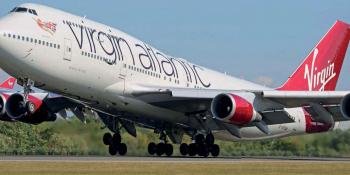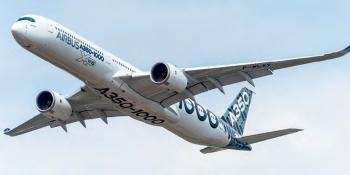

A START-UP company in the Cotswolds has big plans for its aircraft design. Cirencester- based Faradair Aerospace, a hybrid electric aircraft development firm, has created three variants of its Bio Electric Hybrid Aircraft (BEHA) concept to target specific markets.
The company describes itself as “the true pioneers of urban air mobility in the UK” and has ambitions to be one of the leading companies in the sector. It claims BEHA will offer range, payload capability and a low cost of operations.
A key aspect of the BEHA design, and the most eye-catching feature in the illustrations released by Faradair, is the aircraft’s triple box wing configuration.
This patented design is intended to provide slowflying and high-lift capabilities, enabling the aircraft to undertake extremely short take-offs and landings from runways of various surface types and in confined spaces (Faradair says the aircraft will need less than 656ft/200m to take off and land), and at the same time carry large payloads.
BEHA will be powered by a twin-power-source hybrid propulsion system generating 600hp (447kW). A clean-sheet internal combustion engine, the Hybraero H600, able to run on Jet-A1 fuel or biofuel, will generate 300hp (223kW) for the cruise. The other 300hp will be generated by twin electric motors and will be used for take-offs and landings. The aircraft features side-mounted air intakes to provide cooling for the engine and electric motors.
Faradair says the aircraft will have up to ten minutes of “pure electric” propulsion, which can either be used to reduce noise, emissions and fuel burn at take-off, or as a safety back-up in the event of primary internal combustion engine stoppage.
The H600 engine is another example of the crossover between aerospace and motorsport: it has been developed by Faradair in a joint venture with one of its partners, the UK motorsport and advanced engineering company Prodrive, known for its World Rally Championships and Le Mans 24-hour race wins and its carbon composite manufacturing.
The engine prop will be shrouded by a duct to minimise noise and increase flight control at low speeds by vectoring prop-wash for thrust. The BEHA will be an all-carbon composite airframe to reduce weight, with integrated solar panels for onboard system power when the aircraft is parked.
Faradair says the BEHA’s configuration will provide a cleantechnology, environmentally friendly, fixed-wing alternative to many rotorcraft operations. The company has three main variants: the BEHA H1, BEHA E1 and the BEHA M1 military version.
The H1 will have six to ten seats and offer multiple configuration options, such as air taxi, VIP transport, corporate shuttle, medevac, light cargo, patrol and anti-poaching. It will have an autonomous flight capability, a ballistic parachute recovery system for safety and a fixed landing gear (with the capability for floats). Cruise speed will be in excess of 160kts (296km/h) and “up to and beyond” 1,000 nautical miles (1,852km) range depending on payload.
The BEHA E1, announced by Faradair at last summer’s Farnborough Airshow, will have the same flight characteristics as the H1 but it will be a fully electric aircraft powered by twin 150kW electric motors. Faradair claims it will generate zero emissions and noise output of less than 60 decibels.
Once again, the triple box wing configuration is a key part of the design. The design enables the aircraft, says its developer, “to lift considerably heavier payloads than competing aircraft and as a result, the airframe can carry more batteries, enabling it to fly in excess of two hours on pure electric power, recharged via fast charger within 20 minutes at airfields”.
Faradair Managing Director Neil Cloughley said: “Our BEHA E1 can lift a viable load to allow decent range capability, thus lowering the operational cost and noise footprint further from the hybrid variant.
“Certain parts of the world have expressed their desire for a full electric version of the BEHA and we pleased to be able to offer the BEHA E1 as a viable contender into this market.”
The BEHA E1 is expected to fly in 2021 alongside the BEHA H1 hybrid prototype. Cloughley said: “We are currently exploring a number of specific roles for the first prototype aircraft. This little aircraft is going to surprise a lot of people.”



